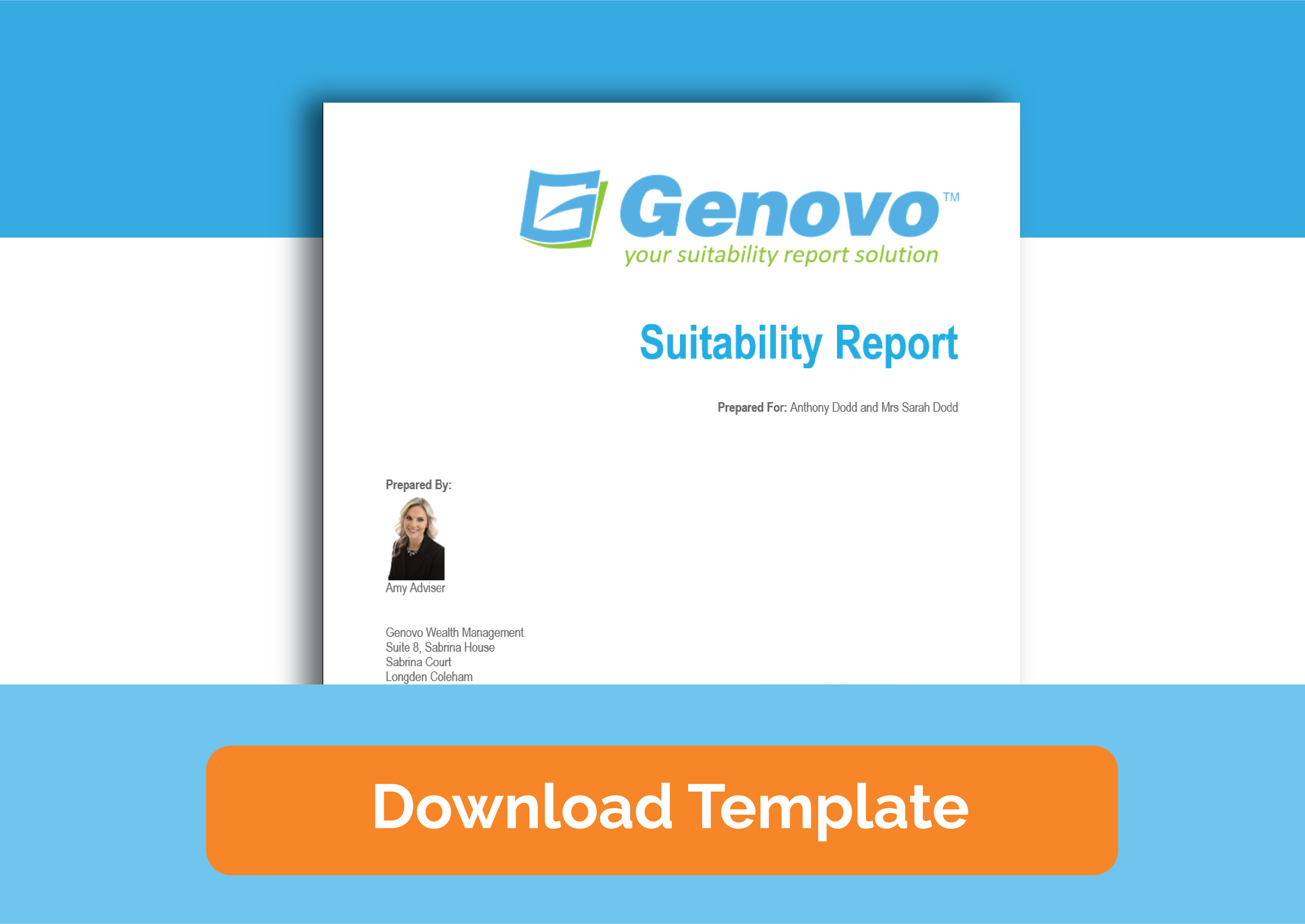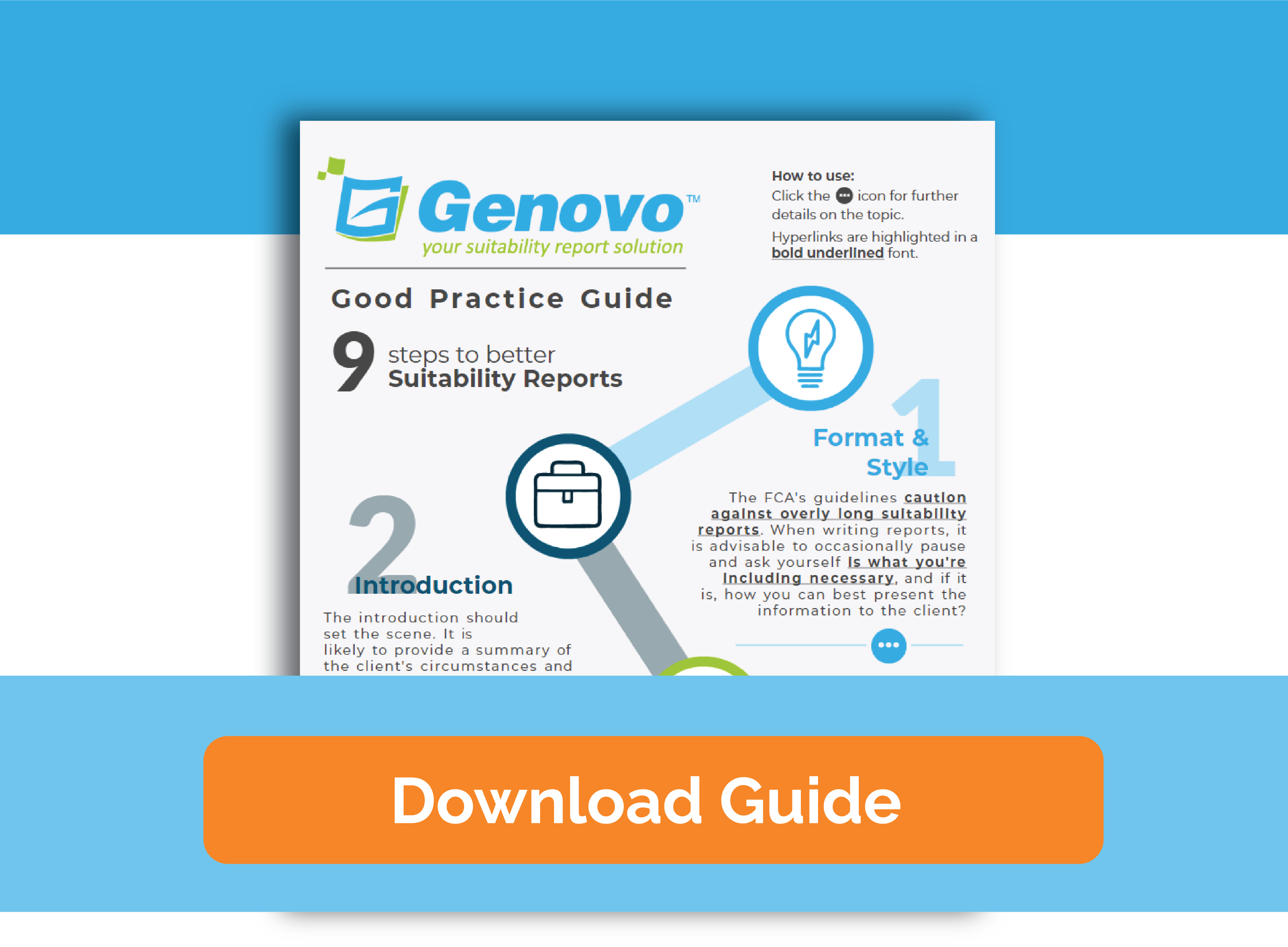
How to write a pension decumulation report
Nigel Ogram
 |
IMPORTANT – This user tip relates to an older version of Genovo. Although much of the content and many of the concepts still apply to the current version of Genovo, the screenshots and some instructions may no longer be accurate. |
Hi – Nigel here for the second month in a row! Last month, my inaugural User Tip Blog was on the relatively simple subject of adding a new user. This month’s blog on pension decumulation is akin to the “difficult second album”!
Background
Despite Steve Webb, the Pensions Minister in 2015 quipping that allowing people to have complete access to their pension funds might prompt them to splash out on a Lamborghini, the ability for a client to take pension benefits when they want, how they want, has been a success and in turn has reinforced the need for good advice.
As the relative ‘new boy’ at Genovo, I was recently tasked with a project to review how Genovo handles a variety of common pension decumulation advice scenarios. Some of the key outcomes from this project have been:
- The creation of three new pension decumulation report templates which you can use as the basis for creating your own reports or templates.
– Genovo Example: Take TFC only from existing uncrystallised pension plan
– Genovo Example: Take taxable lump sum only from existing uncrystallised pension plan
– Genovo Example: Take TFC and income having consolidated existing uncrystallised pension plans
- The refining of some Recommended Actions in the Review of Your Existing Pension Plans and Review of Your Existing Retirement Income Plans sections.
- The creation of some new associated Advice Reasons.
- I now know a lot more about how Genovo handles pension decumulation!
First off, having used other suitability report builders and knowing how clunky they can be in this area, I was pleasantly surprised how well Genovo handles pension decumulation advice given the myriad of different ways a client can take benefits from their pension fund.
However, during the course of the project it struck me that it’s not always immediately obvious how a pension decumulation report should be constructed in Genovo. So, in addition to the changes highlighted above, we decided that it would also be really useful to review the Genovo Report Section Matrix 2.0 and write a new User Tip Blog to help our users navigate the many options Genovo offers.
Nigel’s Golden Rules
There’s a couple of “golden rules” to remember whenever you’re writing a pension decumulation report in Genovo.
Review Sections
There are two pension review sections in the Genovo Report Builder:
1. Review of Your Existing Pension Plans
2. Review of Your Existing Retirement Income Plans
If the pension plan has any element of crystallised fund value, then the entire plan is classed as an “Existing Retirement Income Plan” for the purposes of a review – even if it’s only a small portion of the value that’s crystallised. Note – a plan that has been partly crystallised by UFPLS doesn’t have any crystallised funds remaining, so it’s classed as an existing pension plan.
Recommendation Sections
There are two pension recommendation sections in the Genovo Report Builder:
1. New Pension Recommendation
2. Drawing Benefits from your Pension Fund
In summary, the New Pension Recommendation section is designed to cater for accumulation advice e.g. it’s here that you’d deal with the recommendation of a new PPP for a 30 year old, and the Drawing Benefits from your Pension Fund recommendation section is designed to cater for decumulation advice e.g. it’s here that you’d deal with the recommendation of a new plan / solution to enable the client to start drawing benefits from their pension fund via drawdown or an annuity etc.
However, if the recommendation is only to take a lump sum (either tax-free via Flexi-Access Drawdown, or partly-taxable via UFPLS) from an existing pension arrangement then you don’t need to include the Drawing Benefits from your Pension Fund recommendation section, as you can deal with everything you need to cover off for this type of advice scenario within the relevant review section.
Ultimately, you only need to include the Drawing Benefits from your Pension Fund recommendation section if you are recommending:
- Benefits are taken via a new plan (i.e. post transfer); or
- An income is withdrawn for the first time from a previously uncrystallised pension fund.
The Report Builder
Three of the most common questions we get asked on the Genovo Support Desk from new users who are looking to write a pension decumulation report for the first time are:
- What report type should I use?
- What sections do I need to add into the Genovo Report Builder?
- What Recommended Action should I select in the review section?
Step into the Matrix
Unlike the population of Zion (one for the Sci-Fi fans there, sorry..), here at Genovo, we love a good matrix. They are a highly effective way of setting out large amounts of complex information in a way that is easy to understand
Having scoped out all of the likely pension decumulation scenarios, we soon realised there were far too many to list separately, so we’ve created a “mini-matrix” to cover what we feel are the most likely advice scenarios.
We already have a number of useful matrices including the Genovo Report Section Matrix 2.0 and the Recommended Action Matrix, and we even wrote a blog about Genovo matrices back in late 2019.
Clicking on the image below will direct you to our latest matrix – the snappily-named Genovo Pension Decumulation Advice Scenario Matrix. This is not intended to be an exhaustive list of every possible decumulation scenario, and it assumes that you already know how to add a client and build a report. However, I think it will cover 95%+ of the advice scenarios you’re likely to come across. To make it a bit easier to find the information you need, we’ve broken it down into two sections – uncrystallised and crystallised.

As I mentioned earlier, we’ve created brand new report templates to cover the first three scenarios so you don’t have to worry about which options to select, although clearly you can remove any sections that you don’t want in a report created from a template.
Anyway that’s it for another month. I hope this blog has shed a little light on how to write a pension decumulation report in Genovo.
Further Reading
You’ll find loads more useful information in:
- Genovo’s series of User Tip blogs,
- the extensive Genovo Knowledge Base,
- the collection of really useful Genovo matrices,
- the ever-popular Genovo video tutorials, or
- by attending one or more of our regular monthly training webinars.
Of course, if you’re still stuck, or just need a helping hand, you can always submit a support ticket and we’ll get straight back to you.
Finally – make sure you don’t miss any of our hints & tips – subscribe and get email alerts when we update our blog.

